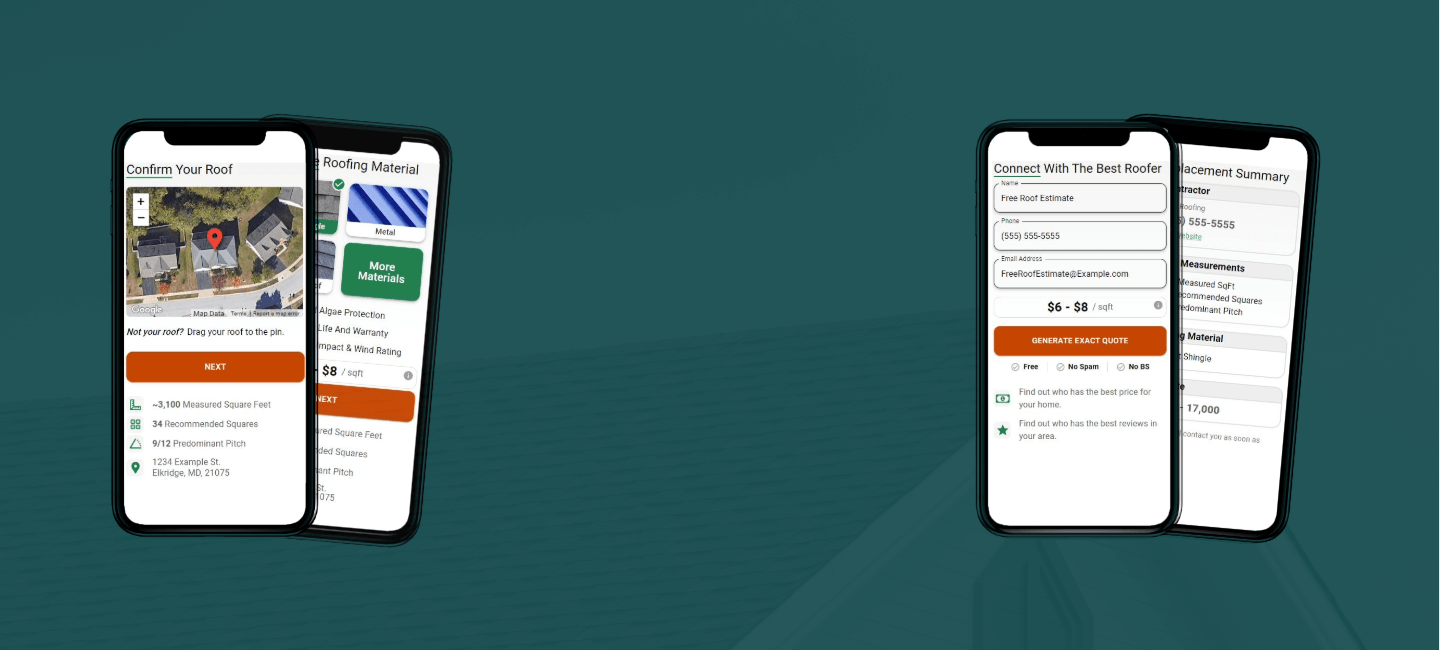
Roof Replacement Costs
Roof replacement costs can stack up if you aren’t paying attention to every detail. From materials to inspections, our roof calculator gives you a fast and free estimate in seconds.
No risk. No obligation. Just knowledge.
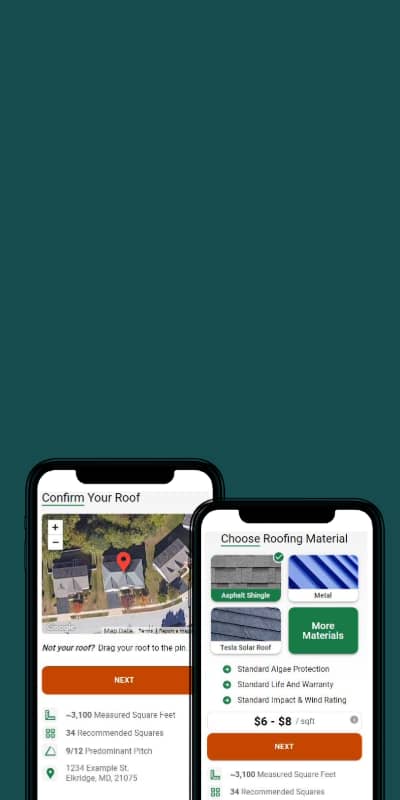
Roof Replacement Costs
Roof replacement costs can stack up if you aren’t paying attention to every detail. From materials to inspections, our roof calculator gives you a fast and free estimate in seconds.
Table of Contents
- Normal Range: $5,641 – $15,140
- Factors for Roof Replacement Costs
- New Roof Cost by Material
- Additional Roof Replacement Costs
- Full vs. Partial Roof Replacement
- Roof Replacement vs. Repair
- How Much Does It Cost to Replace a Roof Yourself?
- 7 Ways to Save on Roof Replacement Costs
- 5 Signs You Should Consider Roof Replacement
What to Include in Roof Replacement Costs in 2023?
Are you thinking about giving your roof a much-needed makeover in 2023 and wondering what you should include in your roof replacement costs? Delving into the financial side of this substantial home improvement project is a crucial step in ensuring you make the right choices for a successful outcome. Our roof replacement cost calculator can definitely help understand the range you need to work within.
To make your journey a breeze, we’ve gathered the freshest data and insights on your roof replacement costs in 2023. Armed with this knowledge, you’ll be well-equipped to embark on this exciting home improvement adventure.
Normal Range: $5,641 – $15,140
Planning for a roof replacement requires a solid grasp of the typical cost range. In 2023, the average cost for a roof replacement spans from $5,641 to $15,140. The cost of your actual replacement can vary widely based on numerous variables, though. So, take this range with a grain of salt as a range for the United States as a whole.
Factors for Roof Replacement Costs
Buckle up for a substantial journey because a roof replacement is no small feat. When it comes to the bill, it’s a bit of a wild ride, and it all hinges on a bunch of different variables. To make sure you’re on the right track and get that precise estimate you’re after, it’s time to understand the major cost influencers. These variables significantly influence the overall expense, so let’s explore them to understand how they shape your unique roof replacement costs.
Size of the Home

The size of your roof is a fundamental factor in determining the cost of a replacement. Larger roofs naturally require more materials and labor. Roofers typically measure roofing projects in squares, where one square equals 100 square feet. The more squares your roof comprises, the higher the overall cost will be.
It is also important to consider the footprint of your home. If your home is multi-leveled, it probably has a smaller roof while ranches and 1-levels spread out wider, so naturally have more roof to replace. Keep that in mind when understanding a square foot estimation as well!
Slope and Pitch of Roof

The pitch or slope of your roof significantly impacts the complexity of the installation process. Steeper roofs are generally more challenging to work on, as they require extra safety precautions and specialized equipment. Roofers need more time and effort to navigate steep pitches, which can increase labor and time costs.
Learn more about how to calculate roof pitch or try out our roof pitch calculator.
Number of Stories
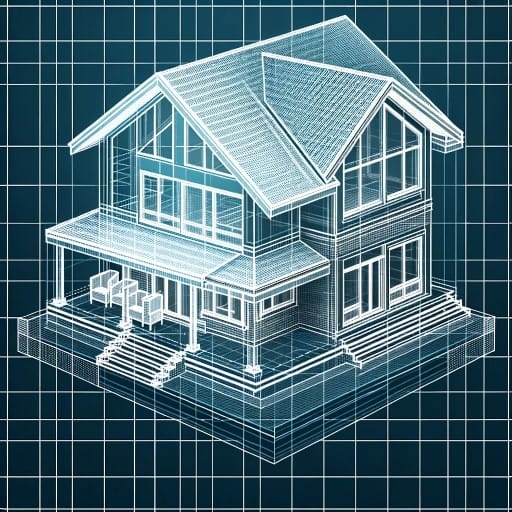
The number of stories in your home plays a role in roof replacement costs. Multiple-story homes often require additional safety measures and equipment, such as scaffolding or safety harnesses, to ensure the safety of the workers. On multi-story homes, the likelihood of a separated roof or multi-level roofs go up as well, which means special treatment to flashing and custom creations to fit perfectly to your home.
Materials
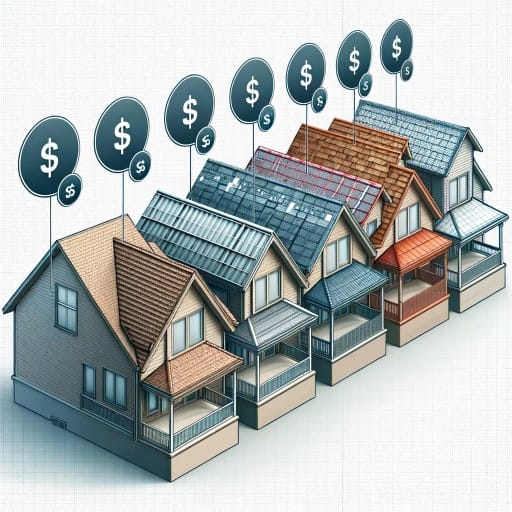
The choice of roofing materials is one of the most significant cost determining factors. Different materials have varying costs, lifespans, and aesthetics. For instance, asphalt shingles are typically more affordable, while metal roofing, slate, or tile can be considerably more expensive but also last much longer. Depending on where you live, your climate, and the age of your home, choosing the material for your roof replacement can be a massive upgrade or just the next leg of the journey.
Laborers & Time

Labor costs can vary based on the complexity of the job, the time it will take, and your location. Experienced and skilled roofing contractors often charge higher rates, but their expertise can lead to a higher-quality installation, potentially reducing long-term maintenance costs. Skilled labor is crucial to ensuring the longevity and performance of your new roof. Going with a discount roofer who doesn’t employ qualified laborers is a gamble that many homeowners unfortunately take. Don’t cheap out with one of your biggest investments! High quality and get quality.
Geographic Location
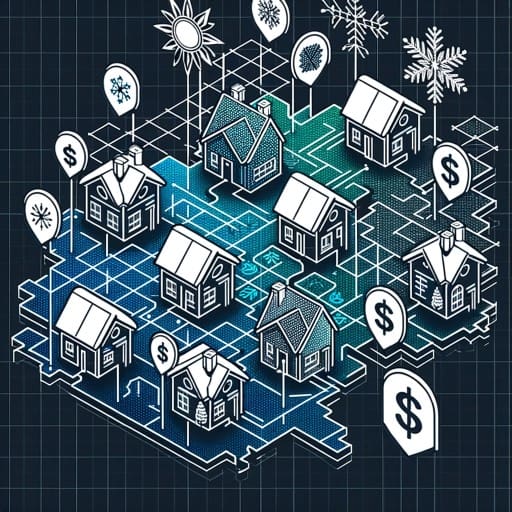
Your geographical location plays a substantial role in your roof replacement costs. Local market conditions, including the availability and cost of materials, labor rates, and demand for roofing services, can vary significantly from one area to another. Be aware of regional price differences and local building codes. Your location can also create a need for laborer safety, allowing breaks for freezing or scalding temperatures for instance. This can increase the time of your project as well.
Permits

Some areas legally require permits for roof replacement projects. These permits are essential to ensure that the work complies with local building codes and regulations. Permit costs can vary based on your location and the scope of your project, so it’s important to check with your local authorities and factor in permit expenses in your overall budget.
Different permits can be required for different projects too. Just getting a roof replacement could require a certain permit, but if you want to add a roof over your back porch, that could require a whole different process!
Inspections
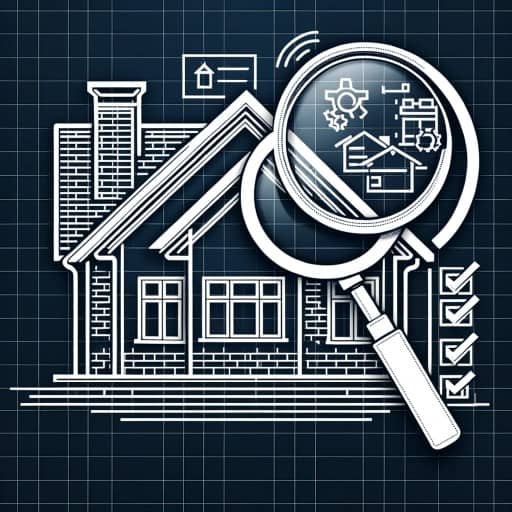
Before the project begins, a pre-installation inspection may be necessary to assess the condition of your existing roof. This can include checking for weather damage, age, and if your insurance company will cover any or all of the cost of your replacement. Some roofers will work directly with your insurance companies, while others will prefer to stay out of communications or battle for approvals.
After the project is completed, a post-installation inspection ensures that the work meets local building codes and regulations. If your insurance company was involved in the cost, they may require a final inspection to make sure their investment is sound and may even make requests to the roofers afterward that may lengthen the timeline.
Make sure you account and ask about these inspection fees before signing any dotted lines!
Understanding all of these factors and how they apply to your specific project is crucial for obtaining an accurate estimate and managing your roof replacement costs effectively. Consult with roofing professionals to discuss your needs and receive detailed, personalized quotes.
New Roof Cost by Material
When it comes to replacing your roof, the choice of roofing material can significantly impact both the aesthetics and cost of the project. Each material has its unique qualities, and understanding the cost implications can help you make an informed decision. Here’s a breakdown of the costs associated with various roofing materials:
Cost of an Asphalt Shingle Roof
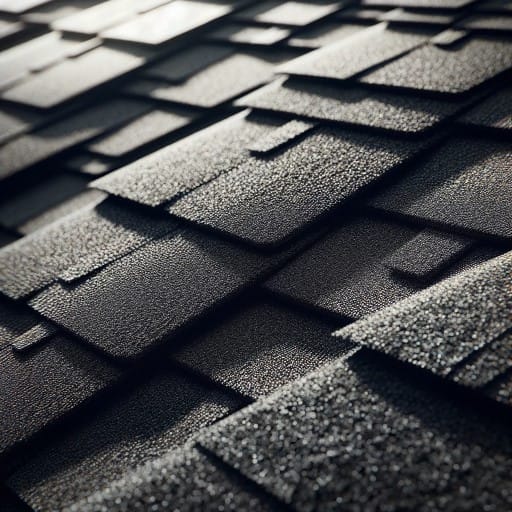
Asphalt shingle roofing is the most popular and cost-effective choice for many homeowners. The cost of an asphalt shingle roof replacement typically falls within a more budget-friendly range. In 2024, you can expect to pay an average of $3.50 to $5.50 per square foot for a new asphalt shingle roof.
Check out our asphalt shingle roofing cost calculator to get a custom, fast, and free estimate for your roof replacement.
Cost of a Wood Shake Shingle Roof

Wood shake shingle roofs provide a warm and rustic aesthetic to your home, but this natural charm comes at a higher cost. For a wood shake shingle roof replacement in 2024, you should budget for approximately $8.50 to $14.00 per square foot. Keep in mind that maintenance requirements are greater for wood shakes, which may add to the long-term cost.
Cost of Metal Roofing

Metal roofing has gained popularity for its durability and energy efficiency. While it’s a more substantial upfront investment, the long-term savings can be significant. In 2024, the cost of a metal roof typically ranges from $7.00 to $12.00 per square foot. The exact cost may vary depending on the type of metal and finish you choose.
Our metal roof cost calculator will give you a fast, and free estimate in seconds for your roof replacement costs.
Cost of Tile Roofing
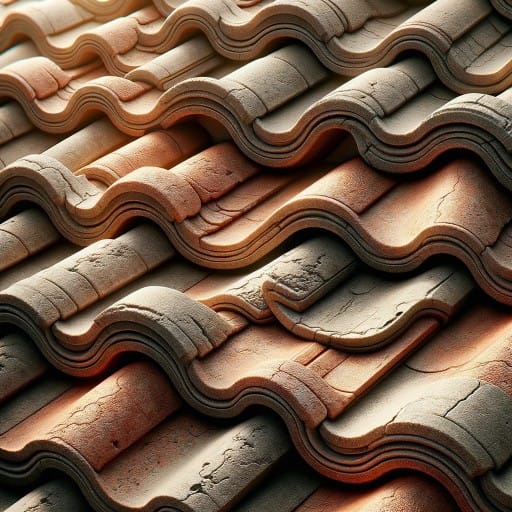
Tile roofing adds a touch of elegance and can last for generations when properly maintained. The cost of tile roofing in 2024 varies depending on the type of tile used. Expect to budget between $10.00 and $18.00 per square foot for a tile roof replacement. Also understand that the installation can be higher cost depending on possible roof reinforcement needed to support a much heavier roof.
Cost of High-End Stone or Slate

For homeowners looking for the ultimate in luxury and durability, high-end stone or slate roofing materials are the way to go. These premium options can transform your home and are known for their longevity. However, they come at a premium price. In 2024, the cost of high-end stone or slate roofing can range from $15.00 to $25.00 per square foot or more, making them one of the most expensive choices.
Cost of Solar Roofing
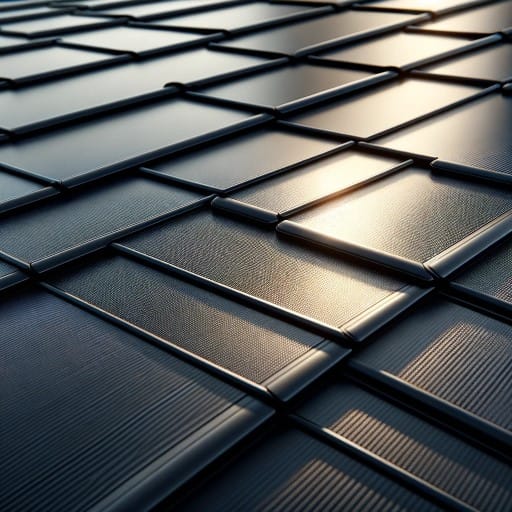
Solar roofing systems, which integrate solar panels directly into the roof, offer both energy generation and protection from the elements. Generally, the price range for solar roofing in 2024 is between $60,000 and $78,000 for an average-sized home. The exact cost depends on factors like the size of the roof, the quality of solar panels, and the complexity of the installation.
High-quality solar panels and complex installations, such as those with multiple angles and obstructions, tend to be more expensive. However, these systems often generate more electricity, potentially leading to greater long-term savings on energy bills and even the possibility of earning credits for excess energy produced.
It’s important to consider the long-term benefits of solar roofing, which can include reduced energy costs, potential tax incentives, and increased home value. When evaluating the cost, factor in the potential return on investment and the positive environmental impact. Many homeowners find that the initial investment in solar roofing pays off over time, making it an attractive and sustainable choice.
If you’re wondering how much your solar roof replacement might cost, check out our Tesla solar roof calculator for a fast and free local estimate.
Select The Right Roofing Materials For Your Roof Replacement
Selecting the right roofing material involves considering not only your budget but also the climate, architectural style of your home, and your aesthetic preferences. Each material offers its advantages and drawbacks, so it’s essential to weigh them carefully to make an informed decision that suits both your immediate and long-term needs.
Additional Roof Replacement Costs
While the main expense of a roof replacement is the roofing material and labor, there are several additional costs and considerations to factor into your budget. Here’s a closer look at these supplementary expenses:
Existing Roof Removal
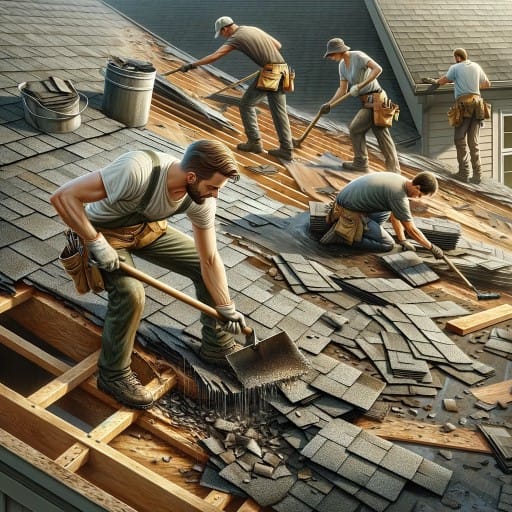
Before a new roof can be installed, the old one must be ripped off and removed. The cost of removing the existing roof varies based on the type of material and the number of layers that need to be stripped off. On average, expect to budget an additional $1,000 to $2,000 for this step. And understand that ripping a roof off may bring to light structural or underlayment issues that need to be addressed.
Roof Inspection
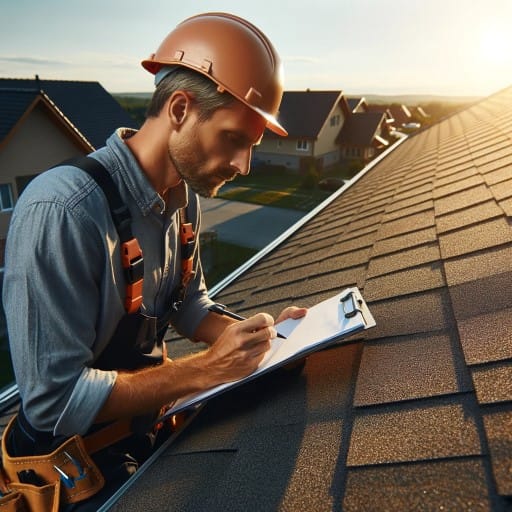
A professional roof pre-inspection and post-inspection are a crucial part of the replacement process. It ensures that the structure is sound, and any underlying issues are identified. Inspection fees typically range from $200 to $500. This can also be a step you have to follow strictly if your home insurance was involved at all in covering the cost of the replacement.
Underlying Structural Repairs
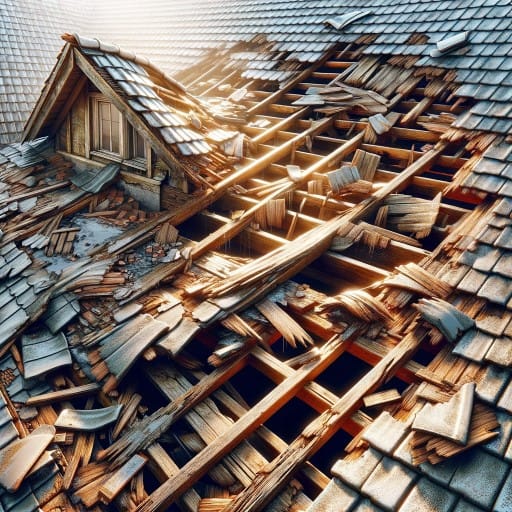
During the inspection, any structural issues, such as damaged decking or trusses, may be discovered. Repairing these problems can add significant costs to your project, ranging from a few hundred to several thousand dollars, depending on the extent of the damage. It could be a non-issue, but understanding and having an extra emergency budget is never a bad idea when sudden issues pop up during any large project.
Chimneys, Skylights, and Other Features
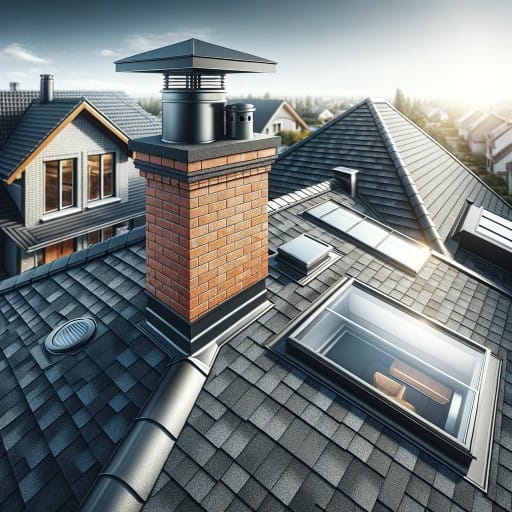
If your roof has additional features like chimneys, skylights, or dormers, their presence can complicate the installation process. Each feature may add $500 to $1,500 or more to the overall roof replacement costs due to the special treatment each feature may need.
Warranty for Your New Roof

Many roofing materials come with warranties that vary in duration and coverage. Consider the cost of an extended warranty if you want extra protection for your investment. Warranty costs range from a few hundred to over a thousand dollars. If you live in a harsher climate, this could be an excellent idea!
Roof Disposal Fees
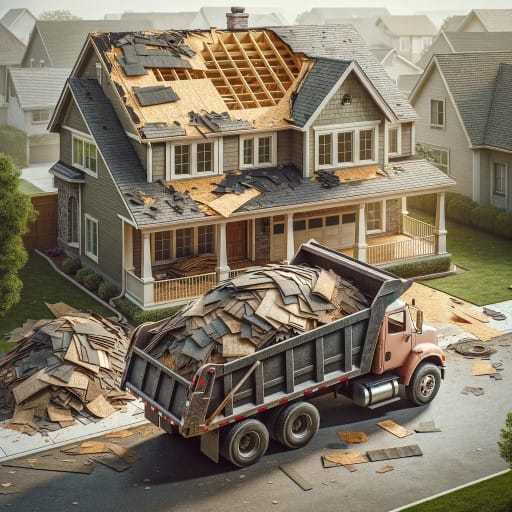
Roofing projects generate debris that must be disposed of properly. Most contractors include this in their service, but it’s essential to confirm. If not, you may need to budget an extra $200 to $500 for clean-up and disposal.
Roof Insurance Deductible

If you’re dealing with roof damage due to events like hail or wind, your homeowner’s insurance might cover a portion of the replacement cost. Be sure to factor in the cost of your insurance deductible.
Full vs. Partial Roof Replacement
When considering a roof replacement, you’ll need to decide whether to replace the entire roof or just specific sections. A full roof replacement is generally more expensive but provides long-term benefits in terms of uniformity, longevity, and warranties. A partial roof replacement, on the other hand, can be less costly upfront but may result in mismatched aesthetics and limited warranty coverage.
Roof Replacement vs. Repair
In some cases, roof repairs may be sufficient to address specific issues, such as localized leaks or minor damage. Roof repairs are generally less expensive than a full replacement and can extend the life of your roof. However, if your roof has widespread issues or is reaching the end of its lifespan, a replacement may be the more cost-effective long-term solution.
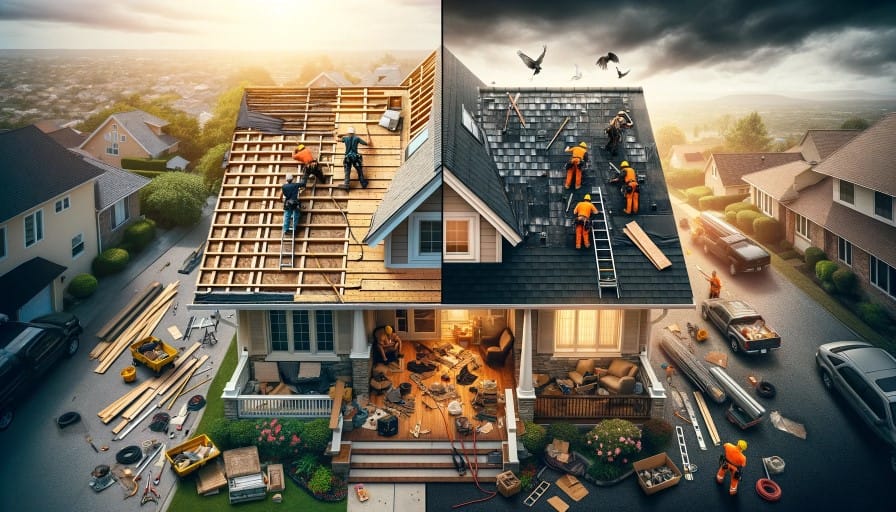
How Much Does It Cost to Replace a Roof Yourself?
If you’re considering a DIY approach to roof replacement, you’ll need to factor in various costs and considerations, such as materials, tools, and safety equipment. Keep in mind that DIY roofing can be physically demanding and potentially risky, so it’s crucial to assess your skills and comfort level. Also understand that your state could require you to secure permits to work on your own roof, which may require certifications or experience. Make sure any work you do on your own home is done legally!
Cost to Replace a Roof Yourself vs. Hiring a Pro
The cost to replace a roof yourself can vary widely depending on factors like the size of your roof, the materials you choose, and your DIY experience. In general, DIY roofing can be cheaper than hiring a professional, with costs ranging from $2,000 to $5,000 or more. However, professional roofers have the expertise and equipment to ensure a quality installation, which can extend the life of your roof and minimize potential issues down the road.
Additionally, if you do work that you later realize requires a permit to do, you may have to undo your work and hire a roofer anyway. Make sure you’re doing everything within the bounds of the law and don’t think that you can work around it.
Ultimately, the decision between DIY and professional installation should be based on your skill level, available time, and the complexity of the project. If you choose to go the DIY route, be sure to research thoroughly, follow safety guidelines, and consult with experts as needed to ensure a successful outcome.
7 Ways to Save on Roof Replacement Costs
Roof replacement is a significant investment, but there are several strategies to help you save on the overall cost while ensuring a quality outcome. Here are eight ways to reduce your roof replacement expenses:
1. Request Quotes from Multiple Roofers

Don’t settle for the first quote you receive! Reach out to multiple reputable roofing contractors in your area. Obtaining multiple quotes allows you to compare pricing, workmanship guarantees, and materials used. It’s a valuable step in finding the right balance between quality and affordability. If you need reliable contractors, check out our Find a Roofer page!
2. Schedule Off-Peak Times

Roofing contractors are typically busier during peak seasons, such as late spring and early summer. Consider scheduling your roof replacement during the off-peak seasons (late fall or winter, depending on your climate). Contractors may be more willing to negotiate on labor costs during these times, leading to cost savings.
3. Choose A Lower Cost Roof Material

While you want a roof that’s both durable and visually appealing, there are cost-effective roofing materials available. Asphalt shingles, for instance, provide a balance between affordability and performance. Research the pros and cons of different materials to make an informed choice that suits your budget. Take into account any agreements like HOA rules about type and color of roofing material so you don’t accidentally end up paying twice trying to save a buck!
4. Consider A Roof-Over
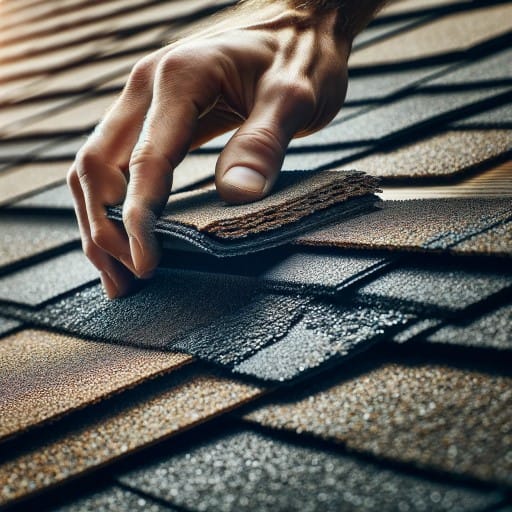
If your local building codes allow it and your existing roof is in reasonably good condition, you can save on labor and disposal costs by opting for a roof-over. This approach involves installing a new layer of roofing over the old one. However, it’s essential to consult a professional to ensure this is a viable option, as it may not be suitable for roofs with extensive damage or structural issues.
5. Perform Regular Maintenance
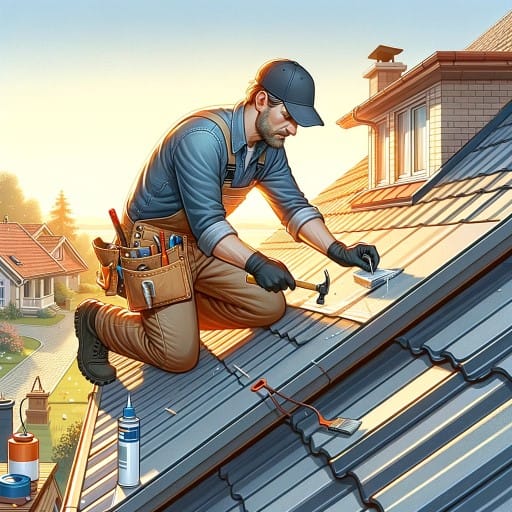
Regular roof maintenance can help you catch and address issues early, prolonging the life of your roof. Invest in periodic inspections and maintenance, addressing minor problems before they escalate into costly repairs or replacements. This proactive approach can save you money in the long run.
6. Roof Financing Options

Explore financing options for your roof replacement and check out our roof financing calculator. Many roofing companies offer financing plans with low-interest rates, allowing you to spread your roof replacement costs over a longer period. Additionally, check if there are any roofing grants or subsidies available in your area. These financial incentives can help alleviate the immediate financial burden of roof replacement.
7. Energy-Efficient Roofing

Consider investing in energy-efficient roofing materials. While these materials may have a higher upfront cost, they can significantly reduce your long-term energy bills by providing better insulation and heat reflection. Over time, the energy savings can offset the initial investment, making it a cost-effective choice.
By combining these strategies, you can make informed decisions that not only save on roof replacement costs but also ensure that you get a durable, attractive, and energy-efficient roof for your home.
5 Signs You Should Consider Roof Replacement
Your roof is one of the most critical components of your home, protecting it from the elements and maintaining its structural integrity. Recognizing when it’s time for a roof replacement is essential to prevent further damage and costly repairs. Here are clear signs that indicate the need for a new roof:
1. You Have An Old Roof
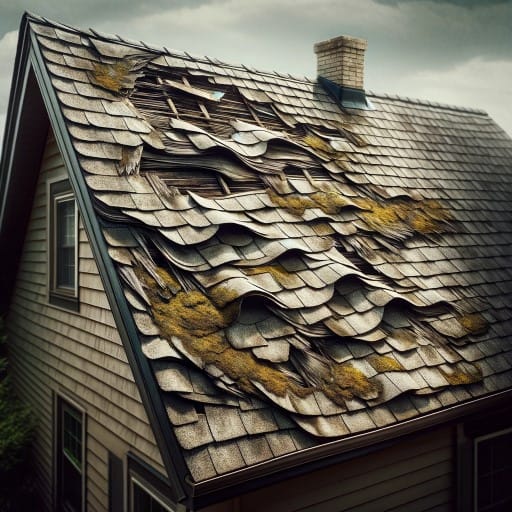
One of the most common reasons for roof replacement is age. Roofs have a finite lifespan, and their longevity varies depending on the type of material used. For example, asphalt shingle roofs typically last between 20 and 30 years, while other materials like metal, tile, and slate can have longer lifespans. If your roof is approaching or has exceeded its expected lifespan, it’s wise to consider a replacement, even if it appears to be in relatively good condition. Aging roofs become more susceptible to leaks, and their overall integrity can deteriorate.
2. Moisture Issues Or Leaks Popping Up
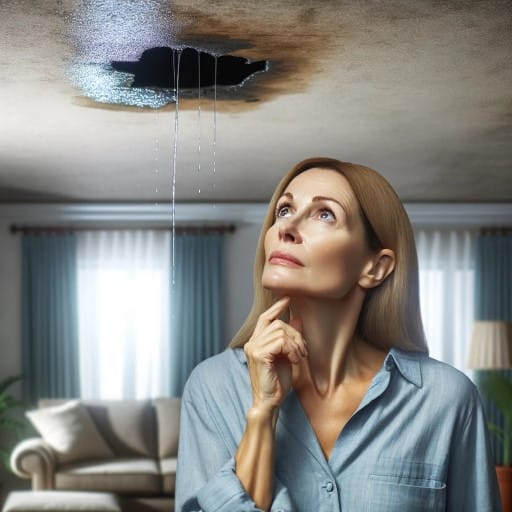
Water stains on your ceiling or walls, mold growth, or persistent moisture issues in your attic are clear signs of a roofing problem. Ignoring these issues can lead to more extensive damage to your home’s structure, including rotting wood, weakened structural supports, and compromised indoor air quality. Moisture problems often indicate that your roof is failing to provide adequate protection against rain and moisture, necessitating timely roof replacement to prevent further deterioration and costlier repairs.
3. Your Roof Has Widespread Damage

Extensive damage to your roof is a clear indicator that it’s time for a replacement. This damage can manifest as missing, curling, or buckling shingles, visible wear and tear, or persistent leaks. When a significant portion of your roof exhibits these issues, it’s often more cost-effective to replace the entire roof rather than attempting extensive repairs. Widespread damage can compromise the structural integrity of your roof and, by extension, the safety and value of your home.
4. Your Energy Bill Is Going Up

A sudden and unexplained increase in your energy bills can be an indication of roofing problems. When your roof’s insulation is compromised, it can lead to heat loss during the winter and heat gain during the summer. As a result, your HVAC system has to work harder to maintain a comfortable indoor temperature, causing your energy bills to rise. A new roof with proper insulation can help lower your energy costs, making it a wise investment in both comfort and efficiency.
5. Light Shines Through The Attic Ceiling

If you can see daylight coming through your attic, it’s a strong sign that your roof is compromised. This indicates that your roof is no longer providing a secure barrier against the elements. Visible gaps or holes in the roofing material can lead to water infiltration, pest infestations, and energy loss. Addressing this issue promptly is crucial to protect the interior of your home.
Recognizing these signs and acting promptly when they appear is essential for maintaining the integrity of your home and ensuring your family’s safety and comfort. If you notice any of these indications, it’s advisable to consult with a professional roofing contractor to assess the extent of the damage and discuss your options for a roof replacement.
Frequently Asked Questions
When it comes to roof replacement, homeowners often have various questions and concerns. Here are answers to some of the most frequently asked questions to provide you with a better understanding of the process and help you make informed decisions:
The duration of a roof replacement project depends on several variables, including the size and complexity of the roof, prevailing weather conditions, and the experience of the roofing crew. Typically, a residential roof replacement can take anywhere from a few days to a week to complete. Larger or more intricate roofs may require more time, while smaller ones can be finished more quickly. It’s worth noting that adverse weather, such as rain or extreme heat, can lead to project delays. Therefore, project timelines may vary based on these factors.
The lifespan of a new roof is closely tied to the type of roofing material chosen. For instance, asphalt shingle roofs, one of the most commonly used materials, typically last around 20 to 30 years. Meanwhile, metal and tile roofs tend to have a longer lifespan, often exceeding 40 years or more. High-end materials like slate can endure for over a century. However, it’s essential to recognize that proper maintenance and local climate conditions also significantly impact the longevity of your roof. Regular inspections and care can help ensure your roof reaches its maximum potential lifespan.
In many cases, it’s advisable to at least inspect your gutters when you’re replacing your roof. Old or damaged gutters can lead to water overflow, potentially damaging your new roof and impacting your home’s foundation. A professional roofing contractor can evaluate the condition of your gutters and provide recommendations. If your existing gutters are in good shape, they can often be reused. However, if they are worn, damaged, or not properly sized, it’s advisable to replace them to ensure proper drainage and protect your overall investment.
Determining whether your roof needs repair or replacement depends on several factors. These include the age of your roof, the extent of damage it has sustained, and its overall condition. For relatively new roofs with localized damage, repairs may be sufficient to address specific issues. However, if your roof is approaching the end of its expected lifespan, has widespread problems, or exhibits significant structural issues, replacing it is typically the more cost-effective and long-lasting solution.
Proper roof maintenance is essential to extend its lifespan and prevent costly problems. Here are some key steps to maintain your roof effectively:
1. Schedule regular roof inspections, at least once a year, to identify and address issues early.
2. Keep your roof clean by removing debris and leaves.
3. Trim overhanging branches to prevent them from causing damage.
4. Check for damaged or missing shingles and address them promptly.
5. Ensure proper attic ventilation and insulation to prevent moisture buildup.
If you’re unsure about roof maintenance or prefer a professional approach, consider hiring a reputable roofing contractor to inspect and maintain your roof as needed.
